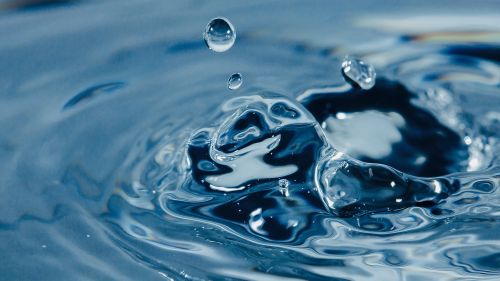Efficient water treatment in Antarctica

Innovative water management at the “Princess Elisabeth Antarctica” research station
The International Polar Foundation (IPF) uses ifm solutions to achieve the goal of zero emissions in Antarctica.
It is a continent of extremes. Ice that can be up to 5,000 meters thick, an average annual temperature of -55 degrees Celsius, and darkness that lasts almost six months. Antarctica is undoubtedly the most inhospitable place for humans to settle permanently. Yet, researchers regularly set off for the South Pole to gradually understand more about the world through various fields of research, such as glaciology, climate research, microbiology and geology.
To facilitate polar research while protecting the environment, the International Polar Foundation (IPF), in collaboration with the Belgian government and numerous private partners, has founded the “Princess Elisabeth Antarctica” research station. The station, which opened in 2009, is unique in that it is the first and so far only research base in Antarctica that operates emission-free. The station is inhabited for four months of the year and during the eight winter months, it continues to operate autonomously, collecting research data and sending it to Belgium via satellite.
Higher recycling rates, lower energy requirements
To accommodate an increasing number of employees, a new water treatment plant opened in the Antarctic summer of 2023. Although energy is generated from wind and solar power, melting snow requires 50 times more energy than recycling water.
- While meeting increased water consumption levels, recycling is more effective and has doubled the amount of reusable water. This makes an enormous contribution towards reducing the research station’s energy requirements.
From 16 to 50 people
“The polar station built in 2009 was designed for 16 people. Today, between 40 and 50 people work here during the summer months. Therefore, the water treatment plant had to be expanded to continue to meet demand – and to be able to process the higher volume of industrial water.”
Zero emissions even for water consumption
When it comes to water production and treatment, there is a great responsibility: “To meet the zero-emission mandate in water management, restoring the purity of the water extracted from snow after it is used and before it is returned to nature is crucial. This is the only way we can truly close the water cycle and minimize our impact on Antarctic nature,” says Aymar de Lichtervelde, the engineer responsible for the project.

Nicolas Herinckx (left) and Aymar de Lichtervelde (right), engineers at the Princess Elisabeth Antarctica research station, in front of the new water treatment plant: reliable high performance in the smallest of spaces. © 2024 the International Polar Foundation
From 55 liters of industrial water, only 30 grams of dry sludge remain
“We can now treat 100 percent of the grey and black water generated in the plant, either to feed it back into our internal cycle or to return it to nature as purified water. As Antarctica is not a country, there are no established standards for the quality of water we are allowed to discharge. The Madrid Protocol sets out several best practices to be followed but does not provide quantitative standards. Therefore, we follow the recommendations for drinking water set out by the World Health Organization. This basis is ambitious from an ecological point of view and also beneficial for our operations, as we can then reuse the water without it being an issue for users.”
The results are impressive too: the treatment plant can treat 54 out of 55 liters of grey and black water, turning it into ultrapure water. Only 30 grams of dry sludge remain per day and the rest evaporates. The sludge is collected and after a few years exported to South Africa to be incinerated.

Aymar de Lichtervelde examines two water samples: on the left is the wastewater discharged at the system’s entry (here black water), on the right is the purified water that can be reused or returned to the environment. © 2024 the International Polar Foundation

The water treatment plant at the Princess Elisabeth Antarctica research station: removal and return to nature are balanced. © 2024 the International Polar Foundation
SM flow meters: compact and powerful
The new plant consists of two redundant systems that have been fitted with equipment, including SM flow meters, from automation specialists at ifm. These sensors record the current flow rate, total flow rate, and the temperature of the medium, with all values clearly displayed on the screen. If desired, a red/green color change indicates whether the values are inside or outside of the target range. The optimized measuring pipe ensures a lower pressure loss so that the pump output can be reduced. Furthermore, no inlet/outlet aisles are required, a huge advantage in confined spaces. Other sensors, such as valve detectors and level sensors, provide additional real-time information about the status of water treatment.
IO-Link simplifies maintenance and cabling
ifm sensors using IO-Link technology provide a fully digital signal and simplify data collection by sending multiple process values to a master, where simultaneously it is routed to the controller and remote monitoring software. Instead of laying cables from each sensor to the control cabinet, as is the case with conventional analog wiring, the sensor data is collected decentrally with field-ready IO-Link masters and bundled for transmission using one IP address. This massively reduces wiring while increasing the amount of data collected.
- Users can save various sensor parameters locally on the respective master. When replacing a defective sensor with an identical model, the parameters are automatically transferred to the new device. This means that on-site replacement can be carried out quickly and easily.
Predictive plant maintenance with remote access
The information is not only important for the controller but also facilitates continuous preventive maintenance. All measured values are sent to the IT level with other diagnostic information about the current status of each IO-Link sensor. This ensures workers can remotely monitor the water treatment plant inside the unmanned research station during the Antarctic winter. It also provides them with important information to prepare in advance for the next summer period.
The Princess Elisabeth Antarctica is only available to researchers for four months of the year. This precious time makes it critical for systems to run reliably. “Therefore, we built the complete new plant in Belgium beforehand and tested it intensively. Everything was then disassembled into smaller components for shipping. Here too, the IO-Link principle served us well, as the standardized M12 connectors meant that the rewiring on-site was carried out without errors and in a short time.”


Image 1: The IO-Link masters collect the data from the sensors decentrally and forward it to the controller and IT level. The masters are connected via daisy chain, which further reduces the wiring complexity.
Image 2: Overview of current flow, temperature and total quantity: the SM flow meter measures the relevant variables in the smallest of spaces.
© 2024 the International Polar Foundation
Conclusion
Modern automation technology and IO-Link for data communication ensure the International Polar Foundation has permanently reliable water treatment at the Princess Elisabeth Antarctica research station. Both on-site and from Brussels – over 8,000 miles away.


